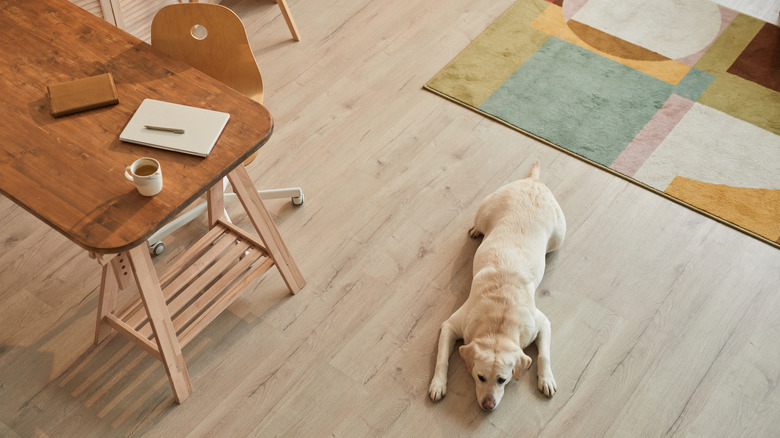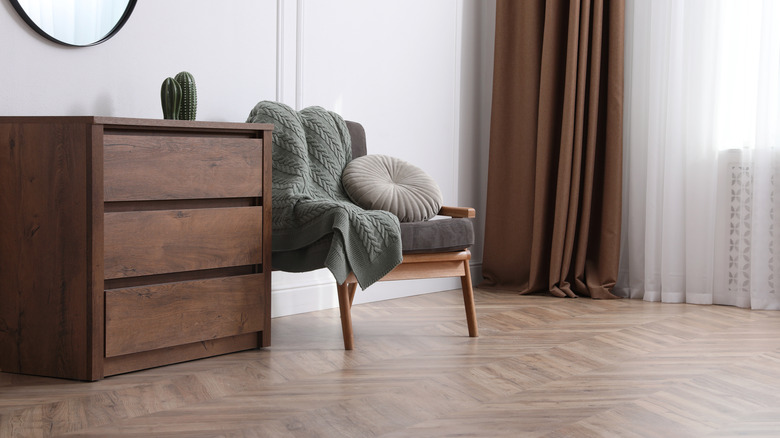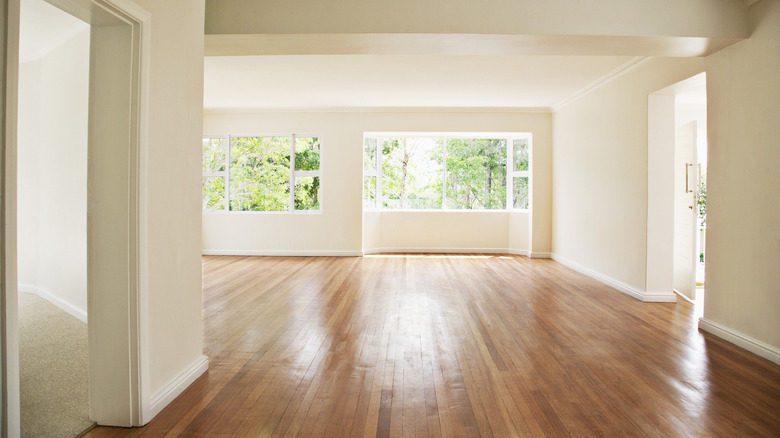The Easiest Way To Install Wood Flooring, According To An Expert
Hardwood floors are a mainstay in the modern American household. Black Forest Hardwood Floors reports that homeowners love this walking surface. It adds elegance to any room, is easy to clean, and can be fabricated from nearly any hardwood species, meaning a vastly diverse selection is possible when it comes to underlying color tone and woodgrain pattern.
But installation isn't always a breeze. From the preparation to the actual laying of boards, this can be a tricky process for those who haven't done it before. Fortunately, new techniques in the fabrication of hardwood flooring have made the installation easier, and with the right kind of boards, you may even be able to get the job done yourself!
In an exclusive interview with House Digest, Rotem Eylor, the founder and CEO of Republic Floor, discusses the easiest process for homeowners looking to add this visually stunning flooring feature to their homes. He notes some important steps in the preparation of a room and the perfect type of floorboards for a pain-free installation.
Floating floors are the smart choice
Eylor suggests a specific type of wood flooring installation. He says, "Floating floors are the fastest and easiest method as the planks are not attached to the subfloor and simply 'float' on top of it. The planks are fastened together with a click system." Instead of gluing the boards down (and together), this installation process helps you navigate wood flooring without the mess. Also, because the boards don't require additional installation materials, it's possible for homeowners to engage in a quick refit themselves, saving additional time and money. This makes floating floors an even more valuable asset for a home remodeling project.
He continues discussing the installation features, noting, "These locking systems are based on a single action installation method and ensure there are no gaps or height differences while installing. The latest technology in this type of system provides stability as well as ease of installation."
Important steps before installation
Eylor reports that the preparation work is a crucial phase of any hardwood flooring installation. He says, "Prior to installation check for moisture in the concrete subfloor. Wood absorbs moisture and can swell if too much moisture is found in a there."
"Also," he notes, "acclimate the wood planks in the room where they will be installed for a minimum of 72 hours. This is important as all-natural products need to adjust to their new environment." Carpenters will be quick to note that boards used in any type of home improvement project will need time to settle when brought into a new space. That's because there's moisture in basically every place you might use lumber and within the boards themselves. As temperature, humidity, and other factors change over time, unsettled boards can become susceptible to increased warpage or even crack in extreme conditions.
Lastly, he suggests a process for developing an appealing visual that will greet you for years to come. "Lay out a few boxes of flooring at a time to visualize the patterns and color tones to ensure a beautiful finished look. Stagger the board lengths for stability and appearance."


